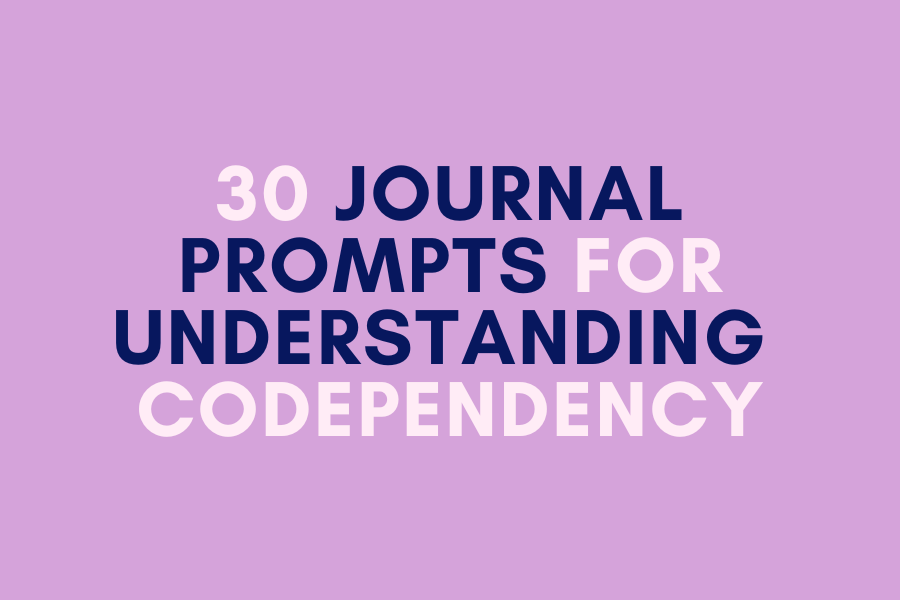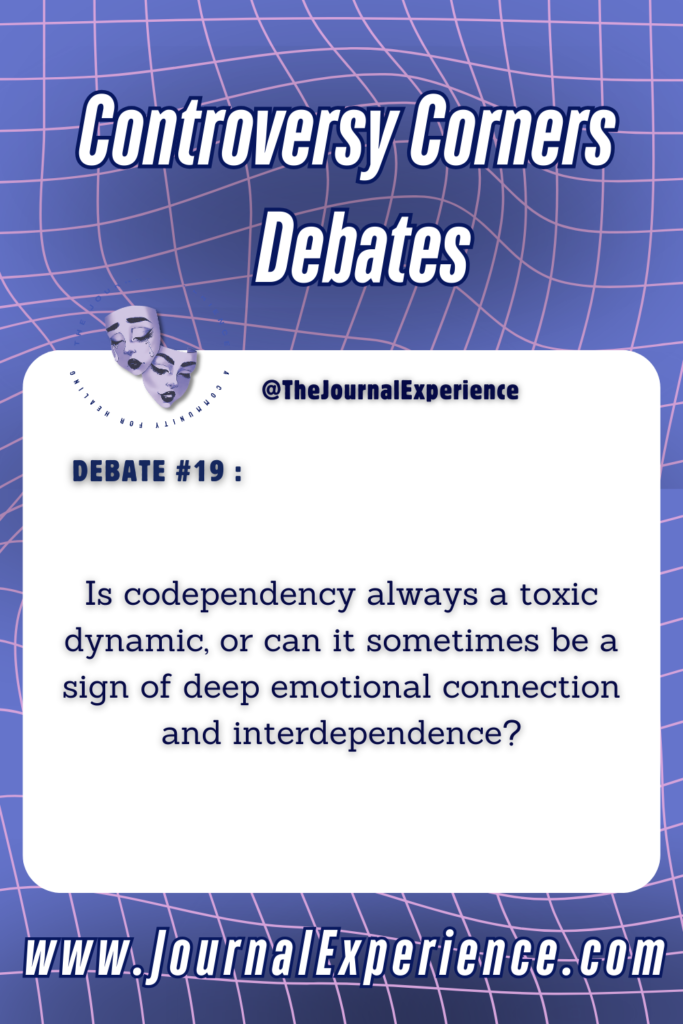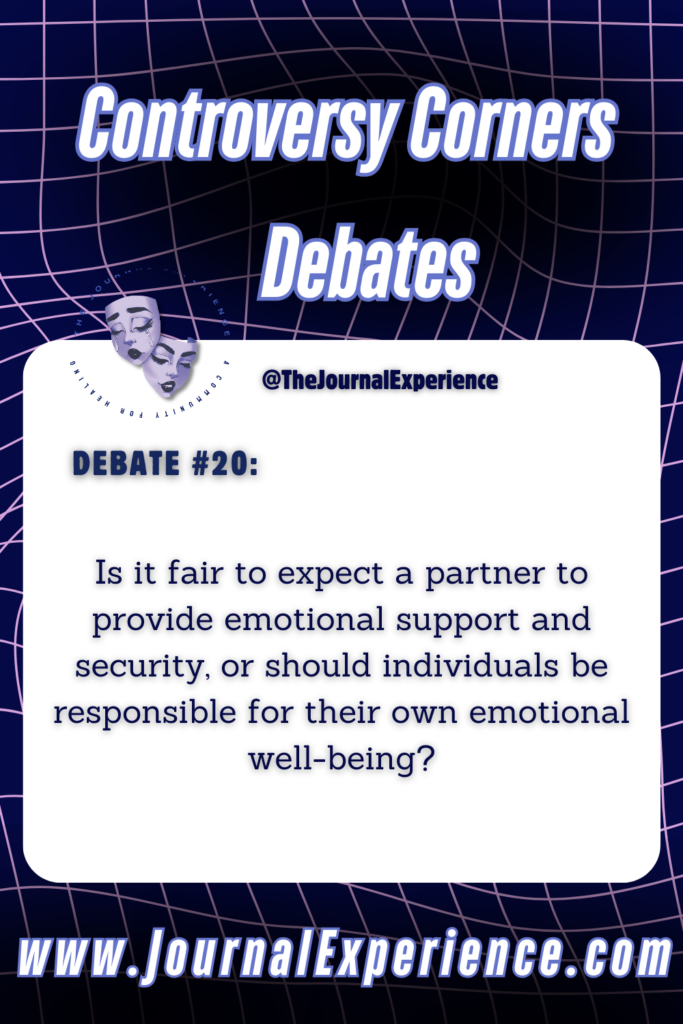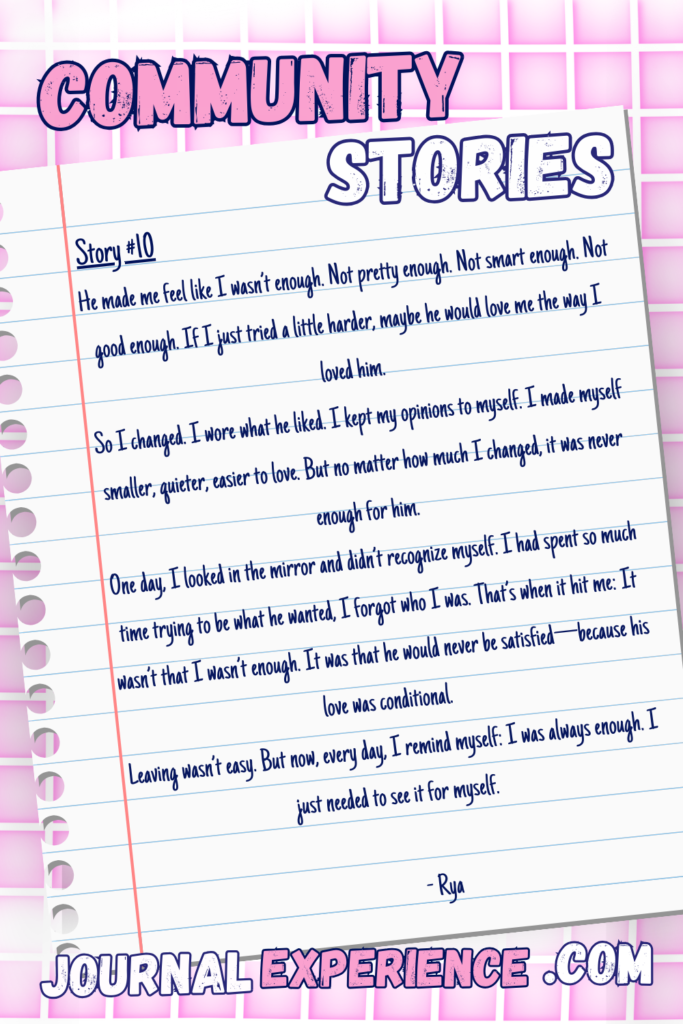Codependency is a complex relationship dynamic in which one person prioritizes the needs, emotions, or approval of another over their own well-being. Often rooted in deep-seated fears of abandonment, low self-worth, or past relational trauma, codependency can lead to emotional enmeshment, difficulty setting boundaries, and a loss of self-identity.

When left unaddressed, it can negatively impact personal growth, emotional health, and overall relationship dynamics.
Journaling is a powerful tool for self-reflection, personal insight, and healing. Through writing, you can gain clarity on the patterns that fuel codependency, explore the underlying causes, and take the necessary steps toward breaking free from unhealthy relationship cycles. Journaling allows you to process emotions, reframe negative thought patterns, and cultivate self-awareness—key components in reclaiming your independence and emotional balance.
These 30 journal prompts will guide you through the journey of recognizing codependent behaviors, understanding their origins, and learning how to establish healthier, more balanced relationships. By engaging with these prompts, you will take an important step toward developing autonomy, self-worth, and emotional resilience.
Journal Prompts for Understanding Codependency
Recognizing Codependent Behaviors
The first step in overcoming codependency is identifying the patterns and behaviors that contribute to it. Codependent individuals often struggle with people-pleasing, difficulty saying no, and prioritizing others’ emotions over their own. This emotional enmeshment can make it challenging to differentiate between one’s own feelings and those of others. By reflecting on these patterns, you can begin to understand where codependent tendencies show up in your life and how they affect your relationships.
Journal Prompts
- Do you often feel responsible for other people’s happiness? How does this affect your well-being?
- How do you typically react when someone is upset with you?
- In what ways do you prioritize others’ needs over your own, even to your own detriment?
- Do you struggle with saying no? What emotions come up when you try to set a boundary?
- How do you feel when spending time alone? Do you feel uncomfortable without external validation?
- Have you ever felt resentful for giving too much in a relationship? What led to that feeling?
Reflection Exercise
Write about a recent situation where you ignored your own needs to accommodate someone else. How did it impact your emotions and self-esteem?

Understanding the Root of Codependency
Codependency often originates from childhood experiences, family dynamics, or past relationships. Many people develop codependent behaviors as a coping mechanism to navigate environments where love and validation were conditional. Exploring the root causes of codependency can provide deeper insight into why these patterns exist and help you start healing from past wounds.
Journal Prompts
- How was love and affection expressed in your family growing up?
- Were you taught to suppress your own needs to keep the peace in your household?
- Reflect on a past relationship where you felt emotionally dependent on someone. What kept you in that dynamic?
- Were you ever in a situation where you felt your self-worth depended on someone else’s approval?
- What beliefs about love and relationships did you develop from your early experiences?
- Have you noticed any repeating relationship patterns that stem from childhood wounds?
Healing Exercise
Write a letter to your younger self, offering reassurance, validation, and unconditional love. Express what you wish you had known about self-worth and independence.
Breaking Free from Codependent Patterns
Releasing codependency requires conscious effort to unlearn old habits and build self-confidence. Journaling can help you challenge self-limiting beliefs, develop self-trust, and take steps toward emotional autonomy. The more you engage in self-reflection, the easier it becomes to cultivate a strong, independent sense of self.
Journal Prompts
- What does emotional independence mean to you?
- In what areas of your life do you struggle with self-trust?
- What fears hold you back from being fully independent?
- How can you start making decisions that align with your personal needs rather than seeking external validation?
- What activities bring you joy and fulfillment outside of relationships?
- What would your life look like if you fully trusted yourself and your ability to meet your own needs?
Confidence-Building Exercise
Make a list of small, daily actions you can take to reinforce self-trust and emotional independence.

Creating Healthy Relationship Boundaries
Setting and maintaining boundaries is essential for breaking free from codependency. Boundaries protect your emotional well-being and allow for healthier, more balanced relationships. Many codependent individuals struggle with guilt or fear when asserting their needs, but learning to set limits is a crucial step in reclaiming your self-identity.
Journal Prompts
- What boundaries do you struggle to enforce in relationships?
- How do you feel when someone disrespects your boundaries?
- What limiting beliefs make it difficult for you to say no?
- How can you communicate your boundaries with confidence?
- What does a healthy relationship look like to you, and how do boundaries support that vision?
- What are some red flags that indicate a relationship may not be respecting your boundaries?
Boundary-Setting Exercise
Write a script for how you can assertively communicate a boundary to someone in your life. Practice saying it out loud.
Moving Forward: Healing and Personal Growth
Breaking free from codependency is a journey of healing, self-discovery, and personal empowerment. As you learn to embrace independence, set boundaries, and prioritize your well-being, you create space for healthier, more fulfilling relationships. Journaling can help you track your progress, celebrate small victories, and stay committed to your growth.
Journal Prompts
- What progress have you made in breaking codependent patterns?
- How can you continue to nurture your self-worth moving forward?
- What personal goals do you have that focus on your independence and well-being?
- How can you remind yourself that you are whole and complete on your own?
- What affirmations can you use to reinforce self-love and confidence?
- What would you tell someone else who is struggling with codependency?
Final Reflection Exercise
Write a letter to your future self, celebrating the growth you’ve achieved and encouraging yourself to stay committed to your healing journey.
Overview
Journaling is a transformative tool for breaking free from codependency and reclaiming your self-identity. By recognizing unhealthy patterns, exploring their root causes, and actively working toward independence, you empower yourself to build healthier relationships and a stronger sense of self-worth.

Healing from codependency takes time, patience, and dedication, but every step you take brings you closer to emotional freedom. The more you commit to self-reflection and boundary-setting, the more you will develop a sense of inner peace and fulfillment.
If you’re ready to explore more self-growth and relationship-healing resources, join The Journal Experience—a supportive space filled with journaling exercises, personal development tools, and expert insights. Subscribe today and take the next step toward emotional independence!